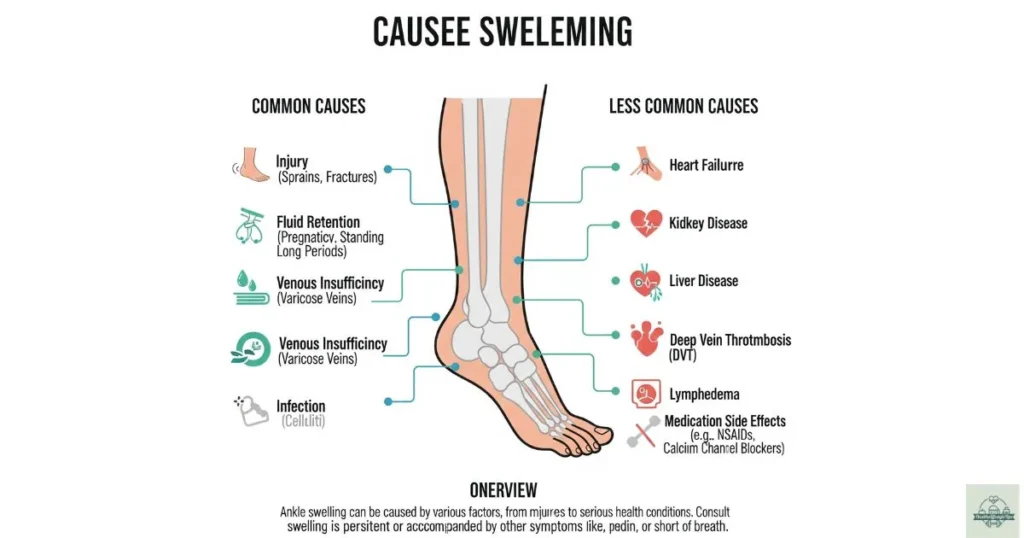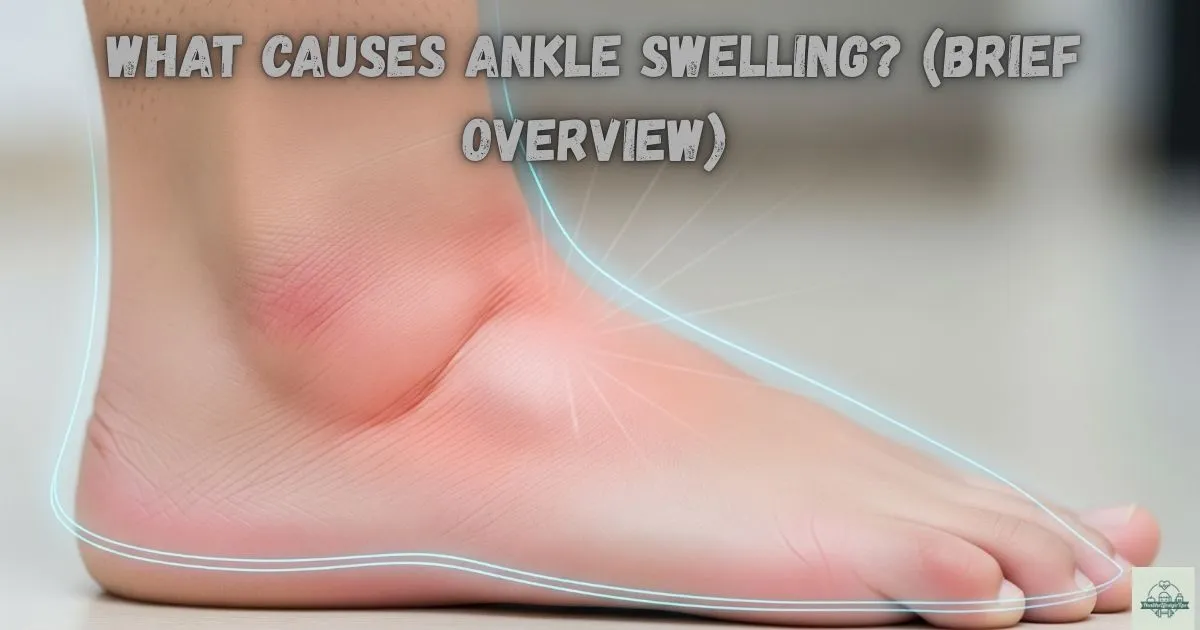Ever notice your ankles looking puffy, like your socks made a dent, or your shoes suddenly feel tight? That’s called swollen ankles. It occurs when extra fluid pools around your ankles, typically due to prolonged sitting or standing, consuming a salty snack, or poor blood circulation.

Most of the time, swollen ankles aren’t serious—they’re your body’s way of saying it needs a change, like moving around more or eating less salt. Knowing why this happens is the first step to helping your ankles feel normal again.
Why Exercise is Key to Reducing Ankle Swelling
Here’s the amazing truth: moving your body is like having a built-in pump for swollen ankles. When you exercise, your muscles squeeze and release, pushing trapped fluid back up toward your heart, where it belongs.
Think of your leg muscles as tiny helpers. Every time you flex your ankle or take a step, these muscles work like a gentle massage, encouraging blood flow and reducing that uncomfortable puffiness. Even simple movements can make a huge difference in how your ankles feel and look by day’s end.
Practical Exercises to Reduce Ankle Swelling

Ready to kick those swollen ankles to the curb? The best part about ankle exercises is that you don’t need fancy equipment or a gym membership. These simple movements work wonders right from your living room.
We’ve organized these exercises by difficulty level, so whether you’re dealing with limited mobility or ready for more challenging moves, there’s something perfect for you. Start slowly and listen to your body – consistency always beats intensity.
Complementary Practices for Reducing Swelling
Exercise alone won’t solve swollen ankles – you need a complete game plan. Think of these complementary practices as your support team, working alongside movement to tackle swelling from every angle.
Simple lifestyle tweaks like staying hydrated, elevating your legs, and watching your salt intake can dramatically boost your results. When combined with regular ankle exercises, these practices create a powerful one-two punch against uncomfortable swelling that actually works.
Also Read: Comprehensive Guide to Ankle Rashes
FAQs and Common Concerns
Do you ever wonder if exercises really help with swollen ankles or if it’s safe to start with joint pain?
Lots of people have these same questions. Good news—gentle ankle exercises are made to be safe and easy for all ages. Most folks see results in just a few days if they stay consistent and mix exercise with healthy habits like hydration and foot elevation. Always consult your doctor for added peace of mind.
What causes swollen ankles?
Swollen ankles occur when fluid accumulates in the tissues, typically due to prolonged sitting or standing, excessive salt intake, or inadequate circulation.
What exercises help reduce ankle swelling?
Gentle movements like ankle circles, toe raises, and walking improve blood flow and reduce swelling.
How long does it take to see results?
Most people notice improvement within a few days of consistently exercising and adopting healthy habits.
Can swollen ankles signal a serious issue?
Sometimes, yes. If swelling is sudden, painful, or doesn’t go away, consult a doctor.
How can I prevent ankle swelling?
Stay active, avoid prolonged periods of sitting or standing, reduce your salt intake, and elevate your feet regularly.
Also Check: Broken or Bruised Toe?
Additional Tips for Preventing Ankle Swelling
Prevention beats treatment whenever dealing with swollen ankles. Small daily habits make a huge difference in keeping that uncomfortable puffiness away.
Stay active throughout your day, even if it’s just wiggling your toes under your desk. Avoid sitting or standing in one position for extended periods, and prop your feet up whenever possible to keep fluid flow moving properly.
Conclusion
You now have everything you need to tackle swollen ankles head-on. Remember, consistency is your secret weapon – even 5 minutes of daily ankle exercises can transform how your feet feel.
Start with one or two gentle movements today, and gradually build your routine. Your ankles will thank you for taking action instead of just hoping the swelling goes away on its own. Small steps lead to significant changes!
